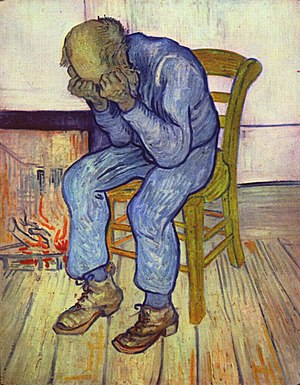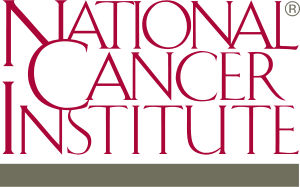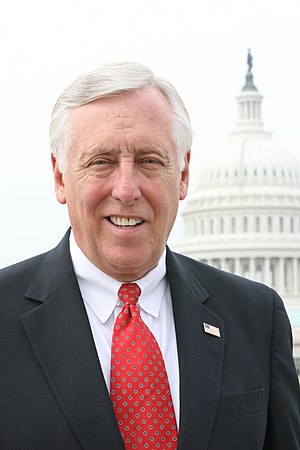Pulitzer Prize-winning journalist Saul Friedman (bio) writes the bi-weekly Reflections column for Time Goes By in which he comments on news, politics and social issues from his perspective as one of the younger members of the greatest generation. He also publishes a weekly column, Gray Matters, on aging for Newsday.

In the kind of journalism I have practiced these 50 years, after my by-line, I have mostly stayed out of the story. I don’t much care for celebrity journalists who make themselves the story; they tend to become entertainers who don’t entertain.
But I will make an exception here, not to entertain, but to talk about my own health problems and care. And because I am 80, I think my experiences give me some credibility. I’ll get to that later, but along with my years of expertise gathered from writing my column on issues affecting older people, perhaps I can dispel some of the idiotic notions about the health care debate, most of which come from younger people who are grinding axes for the insurance or drug companies, or who are just plain ignorant and believe they will never get sick or old. What is outrageous is that supposedly responsible Republicans remain silent amid the insanity of the kooks.
I don’t think most older people fell for those “death panel” lies. That came from right-wing nuts who are as young as they are ignorant and Republican members of Congress who would just as soon kill
Medicare and Social Security, which would kill more of the old. Most older people are not afraid of talking about and planning for their incapacity or death or that of a loved one.
It’s common for hospitals and doctors to ask for and demand to have in their files, a patient’s living will and/or an advance directive. In my late sister-in-law’s community for older people, most of the residents had “DNRs” (Do Not Resuscitate) tacked to their refrigerators in the event they could not speak for themselves.
Most older people I know also have designated friends or children as health care proxies. Most forms for these documents are available online or for little cost. My living will and most others tells doctors and relatives when to pull the plug. Unfortunately, many doctors and relatives are reluctant to have such a responsibility.
Many older people have consulted with and paid good money to lawyers for these end-of-life documents. In one of the health care bills, they could instead consult their physician. Who but ignorant trouble-makers would object and make a death conspiracy out of a section in one of the health care proposals that would authorize Medicare to pay a doctor $75 once every five years to give some advice on these documents and the possible choices? Is the doctor going to order your death for $75?
Who but some ignorant fool would deny a person the information that if he/she or a loved one is suffering from a painful, perhaps terminal illness that hospice or
palliative care would be available to deal with pain and suffering?
Did you know that Medicare pioneered in paying for the help of hospice and palliative care for the terminally ill, forcing most insurers to offer the same benefit? Did you know that if you defeat the terminal illness and live, you can get off hospice care without having to give the money back?
But I’ve gotten ahead of myself.
Time magazine, among others, report that older people are surprisingly hostile to what has been wrongfully called “Obamacare.” And many have split with AARP because of its seeming support for the reforms. But I believe that’s because President Obama and the AARP went too long before making it clear what precisely they are for in health reform.
The president’s speech to a joint session of the Congress was typically superb, in setting out his proposals for reforming health insurance. But it’s not simply the health insurance industry that needs reforming; I doubt that’s possible. It’s health care that needs a radical overhaul.
On the morning after his speech, I heard a Michigan woman calling in on a Washington, D.C. radio show. Her insurance premium from Blue Cross/Blue Shield for her family of three was going up 33 percent from $1,000 a month because, she said, “the insurance company was going to be forced to cover pre-existing conditions.” Does anyone believe the insurance industry will agree to lower profits and executive salaries?
What remains on the table, despite Obama’s words, are cumbersome, top-heavy confusing sausages called
health care reform ground out by five different committees. Obama made a strong case for liberal, activist government, but a weaker case for a non-profit activist government plan among the insurance choices.
I still don’t know what the president will fight for. Obama has already made unseemly deals with drug companies that will allow them continued profits and power. And the president rarely mentions that what he calls reforms won’t go in effect until 2013 or as late as 2023. Medicare went into effect 11 months after its passage.
As this site has said many times, Medicare for All, which gradually covered all Americans would have been the simplest, most straightforward health care reform. But Obama has said he feared the consequences for the insurance industry and charges of a government take over of health care. But everything I’ve read indicates that most people (and businesses) would give up paying through the nose for their shaky insurance if they had a chance to sign up for Medicare.
I will wager that if Americans were told that health care reform would give them the deal I have - original Medicare plus a private plan – things would be less confusing all around. Ronald Reagan was smart enough to leave Medicare alone, years after denouncing it as socialistic. Even the rabid right would have a more difficult time attacking Medicare as government control of health care. It is. And too many older people and their kids know it and like it.
I always thought it was a mistake to call the reform I favor “single-payer.” Why not call it after one of the most popular health insurance programs we have – “Medicare For All?” I was calling it that in my column as early as a dozen years ago. And Dr. Marcia Angell, then editor of the
New England Journal of Medicine, has for years called for the gradual inclusion of all Americans into Medicare.
As I wrote, Medicare’s finances would be enhanced by enlarging and strengthening the risk pool with younger, healthier people (paying taxes and premiums). Otherwise Medicare could die of old age. And that would be a tragedy.
That possibility (if the wingnuts get their chance) and my hope for Medicare For All, brings me to my personal history with health care and Medicare, for I was fortunate to be struck with serious, life-threatening problems after I became eligible for Medicare, which meant I never had to check first to see if I was covered.
On the eve of April Fool’s Day, 2003, just as I had finished a column and was playing solitaire, my right hand suddenly lost control of the mouse. A call to 911, a trip to the emergency room and by morning I had had a partly paralyzing stroke affecting my right side and my speech. Fortunately it was not worse.
I had eight weeks of intensive rehabilitation at a top hospital and was permitted to stay another several weeks because my wife, during one of her frequent trips to and from the hospital, had a serious auto accident and was herself hospitalized.
To sum up: Medicare paid for all our medical bills, supplemented by my wife’s secondary insurance, similar to what is available to all federal employees including members of Congress. Indeed, a range of choices similar to the Federal Employees Health Benefits are what would be offered in one of the bills pending in Congress.
On Valentine’s Day, 2005, came another blow: I was diagnosed with esophageal cancer in its early, curable stage. But here was my initial fear: Would the best surgeon at Johns Hopkins Medical Center take on a Medicare patient in his seventies who was partly paralyzed by a stroke?
I learned, to my relief, that the young surgeon, Dr. Stephen Yang, specialized in cases involving older people. There was no question that Medicare would cover the radiation, the chemotherapy, the 12 hours of surgery, the follow-up surgery and every checkup since.
Contrast that with the private Medicare Advantage policies that can nickel and dime you to death even though they make great profits and get $10 billion a year in subsidies from you and me. I reported on a recent position paper by UnitedHealth, recommending that Medicare could save money if patients shop for less expensive care, or consider alternatives to surgery for certain cancers at certain ages.
Rationing, of course, is what helps private insurers earn profits and pay high salaries for their CEOs. Never has Medicare told me, “You’re too old.”
One of the several health care proposals before the Congress comes closest to Medicare for All. It was approved by the Democratic majority on the Senate Health, Education, Labor and Pensions Committee (HELP) without a single Republican vote. It was Senator Edward Kennedy’s bill.
Why didn’t Barack Obama put his actions where his fine words were and tell the Democratic Congress to pass the Kennedy bill?
TIME GOES BY | REFLECTIONS: Health Care
 Image via Wikipedia
Image via Wikipedia![Reblog this post [with Zemanta]](http://img.zemanta.com/reblog_b.png?x-id=11102f00-38fe-418c-8d3c-4bff86690c82)

![Reblog this post [with Zemanta]](http://img.zemanta.com/reblog_b.png?x-id=dfd70d25-a874-4999-a277-418d6ba404c9)

![Reblog this post [with Zemanta]](http://img.zemanta.com/reblog_b.png?x-id=81a5d264-6786-493c-a3f7-f6be25cc8fe3)

![Reblog this post [with Zemanta]](http://img.zemanta.com/reblog_b.png?x-id=58af145a-ba2b-42f2-a956-da0d55a3ef5d)

![Reblog this post [with Zemanta]](http://img.zemanta.com/reblog_b.png?x-id=010af6fc-7cb4-4956-89b2-fb590d05cb71)
![Reblog this post [with Zemanta]](http://img.zemanta.com/reblog_b.png?x-id=3b031a0b-a8cd-4258-8cec-dabb8ffcb160)

![Reblog this post [with Zemanta]](http://img.zemanta.com/reblog_b.png?x-id=8870928a-bffa-4caa-a5c8-e8fc8715ae26)

![Reblog this post [with Zemanta]](http://img.zemanta.com/reblog_b.png?x-id=d1008cbf-3696-424c-abbb-1382cb48efca)
![Reblog this post [with Zemanta]](http://img.zemanta.com/reblog_b.png?x-id=9a6ccde4-36f3-41ea-95a2-0b61d4eb5188)
![Reblog this post [with Zemanta]](http://img.zemanta.com/reblog_b.png?x-id=903d286e-ac25-4520-a798-3d4fd9e82757)


![Reblog this post [with Zemanta]](http://img.zemanta.com/reblog_b.png?x-id=373ff958-8702-4a55-acf1-2f567c9769ba)
![Reblog this post [with Zemanta]](http://img.zemanta.com/reblog_b.png?x-id=3533cdc0-314f-4f96-83c0-3a8292081bdb)
![Reblog this post [with Zemanta]](http://img.zemanta.com/reblog_b.png?x-id=47847f79-354e-42d8-aa9a-b41bf70f02dd)

![Reblog this post [with Zemanta]](http://img.zemanta.com/reblog_b.png?x-id=8d90f26f-2c0b-44bd-a2b9-42195315b7ba)
![Reblog this post [with Zemanta]](http://img.zemanta.com/reblog_b.png?x-id=f4da5ace-fc7c-4889-ba7c-1b5360ef628f)

![Reblog this post [with Zemanta]](http://img.zemanta.com/reblog_b.png?x-id=d7b3d35e-ccdf-43d2-b342-cb2f8e9ec932)

![Reblog this post [with Zemanta]](http://img.zemanta.com/reblog_b.png?x-id=d758cf3d-63f5-4195-ac71-46ec842a0d71)
![Reblog this post [with Zemanta]](http://img.zemanta.com/reblog_b.png?x-id=1c90ea89-05c1-4385-b46a-a93b51c74fe9)

![Reblog this post [with Zemanta]](http://img.zemanta.com/reblog_b.png?x-id=9b1a690c-1636-4165-9a9b-0ae090d12a4c)

![Reblog this post [with Zemanta]](http://img.zemanta.com/reblog_b.png?x-id=bed60092-7cd1-47c8-8411-ba581696cf7f)
![Reblog this post [with Zemanta]](http://img.zemanta.com/reblog_b.png?x-id=b18b96eb-6881-42b6-a4a5-89aaa0b0fece)
![Reblog this post [with Zemanta]](http://img.zemanta.com/reblog_b.png?x-id=78957edc-e32c-442a-964d-b9d0d975989b)

![Reblog this post [with Zemanta]](http://img.zemanta.com/reblog_b.png?x-id=c512bee3-901d-4e21-81a1-42713a643324)
![Reblog this post [with Zemanta]](http://img.zemanta.com/reblog_b.png?x-id=d5215c7f-fef1-45f8-9966-dd7981b582cc)

![Reblog this post [with Zemanta]](http://img.zemanta.com/reblog_b.png?x-id=b89616e8-d4fb-49f4-b2b7-78a791b70cc0)

![Reblog this post [with Zemanta]](http://img.zemanta.com/reblog_b.png?x-id=b3127b9a-7d43-453d-9778-1e700637bdbe)

![Reblog this post [with Zemanta]](http://img.zemanta.com/reblog_b.png?x-id=3fde7ca3-2967-409d-a887-7a72c3dffc30)
![Reblog this post [with Zemanta]](http://img.zemanta.com/reblog_b.png?x-id=8e43eaa2-0301-4f38-a087-382439886901)
![Reblog this post [with Zemanta]](http://img.zemanta.com/reblog_b.png?x-id=2db84158-4940-4044-adea-0ea72cff939c)